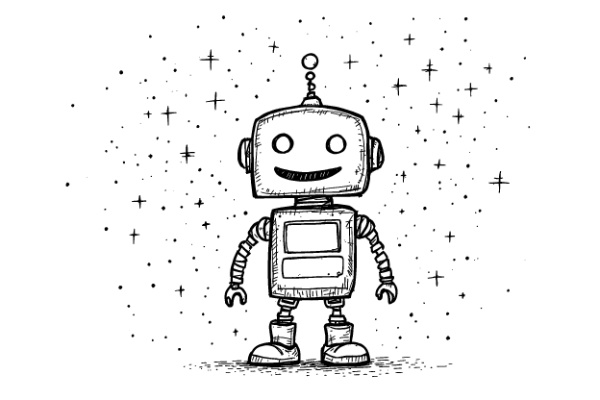Ever felt like you’re fishing in the same pond over and over again, catching the same old fish? Maybe it’s time to cast a wider net. Diversity and inclusion aren’t just buzzwords—they’re your secret weapon to supercharge your hiring process in 2025.
The Elephant in the Room: Why Diversity Still Feels Like an Afterthought
Let’s be real for a second. Despite all the noise about diversity, many companies are still stuck in the same old hiring habits. Why is that? Is it fear of the unknown? Maybe. Is it laziness? Could be. Or perhaps it’s just uncomfortable to change.
But here’s the kicker: companies with diverse teams are more innovative, make better decisions, and generally kick more butt than those stuck in their homogenous bubbles. Don’t believe me? A McKinsey study found that companies in the top quartile for ethnic and cultural diversity are 36% more likely to have above-average profitability.
So, what’s holding us back?
A Tale of Two Companies
I once consulted for two startups in the same industry. Company A had a team that looked like clones—same backgrounds, same schools, even the same favorite coffee order (latte with almond milk, anyone?). Company B was a melting pot of cultures, experiences, and perspectives.
Guess which one was beating projections and which one was struggling to innovate?
Yup. Company B was crushing it.
Why Diversity and Inclusion Matter More Than Ever
In a world that’s more connected than my grandma’s old yarn basket, the ability to understand and serve diverse markets is crucial. If your team doesn’t reflect the diversity of your customer base, you’re missing out on invaluable insights.
And let’s not forget about talent. The best people want to work for companies that value diversity. It’s not just about checking boxes; it’s about creating a workplace where everyone feels they belong.
The Mirage of Meritocracy
“But we hire based on merit!” I hear you cry.
Sure you do.
But let’s dig deeper. Meritocracy assumes everyone starts from the same place, with the same opportunities. Reality check: they don’t. Unconscious biases, systemic barriers, and uneven playing fields are very real.
If you’re only fishing in your usual spots, you’re not giving everyone a fair shot.
Unconscious Bias: The Invisible Barrier
Ever swiped left on a resume because the name was hard to pronounce? Or maybe you felt a “gut feeling” that a candidate wouldn’t be a culture fit?
That’s unconscious bias sneaking up on you.
It’s human nature to gravitate towards the familiar, but in hiring, this can be a killer. Unconscious bias can lead you to overlook amazing talent.
So how do we combat it?
Blind Recruitment Techniques
- Anonymize Resumes: Remove names, photos, and other identifying information.
- Structured Interviews: Ask each candidate the same questions to level the playing field.
- Diverse Hiring Panels: Include team members from different backgrounds in the hiring process.
Casting a Wider Net
If you always do what you’ve always done, you’ll always get what you’ve always gotten. Time to shake things up.
Expand Your Sourcing Channels
- Partner with Diverse Organizations: Universities, professional associations, community groups.
- Leverage Social Media: Use platforms like LinkedIn to reach a broader audience.
- Employee Referral Programs: Encourage your diverse team members to refer candidates from their networks.
Job Descriptions Matter
Words have power. The language you use in job postings can either attract or repel diverse candidates.
- Avoid Gendered Language: Words like “rockstar” or “ninja” may deter some candidates.
- Inclusive Qualifications: Focus on essential skills rather than laundry lists of requirements.
- Express Commitment to Diversity: Let candidates know that you value diversity and inclusion.
The Role of Technology: Friend or Foe?
AI and machine learning are hot topics in recruitment, but can they help with diversity?
Pros
- Reduce Human Bias: Algorithms don’t have unconscious bias (in theory).
- Scalable Screening: Assess more candidates efficiently.
Cons
- Biased Data In, Biased Output: If your training data is biased, your AI will be too.
- Transparency Issues: Black-box algorithms can hide discriminatory practices.
At Machine Hiring, we’ve developed AI tools designed to promote diversity by focusing on skills and competencies, not keywords.
Building an Inclusive Culture Starts at Home
There’s no point hiring diverse talent if they don’t feel included once they join. Retention is just as important as attraction.
Onboarding with Inclusion in Mind
- Buddy Systems: Pair new hires with mentors from different departments.
- Inclusive Policies: Flexible working arrangements, parental leave, and accommodations for disabilities.
Ongoing Training and Development
- Diversity Training: Educate your team about unconscious bias and cultural competence.
- Career Development Programs: Ensure equal opportunities for advancement.
Measuring What Matters
You can’t improve what you don’t measure.
Key Metrics to Track
- Diversity Ratios: Representation across different levels of the organization.
- Recruitment Funnel Drop-off Rates: Identify where diverse candidates are exiting the process.
- Employee Satisfaction Scores: Use anonymous surveys to gauge inclusion.
The Legal Tightrope: Navigating Compliance
Don’t get tripped up by legal pitfalls.
Know the Laws
- Equal Employment Opportunity (EEO): Compliance is non-negotiable.
- Affirmative Action: Understand how it applies to your organization.
Document Everything
Keep records of your hiring practices to demonstrate fairness and compliance.
Let’s Talk Money
I get it—budget constraints are real. But investing in diversity can have a serious ROI.
The Business Case
- Innovation Boost: Diverse teams generate more creative solutions.
- Market Expansion: Better understand and serve diverse customer bases.
- Talent Attraction: Become an employer of choice for top talent.
Quick Wins: Actions You Can Take Today
Feeling overwhelmed? Start small.
- Audit Your Job Descriptions: Remove biased language.
- Diversify Sourcing Channels: Post jobs in new places.
- Implement Blind Resume Reviews: Focus on skills, not backgrounds.
- Set Up Diversity Metrics: Begin tracking key data points.
Looking Ahead: The Future of Inclusive Hiring
As we hurtle towards 2025, the companies that prioritize diversity and inclusion will be the ones that thrive.
Emerging Trends
- Neurodiversity Hiring: Embracing different ways of thinking.
- Remote Work: Expanding talent pools globally.
- Inclusive Technology: Tools that facilitate accessibility.
Closing Thoughts
Diversity and inclusion aren’t just moral imperatives—they’re business necessities. The world is changing, and so must we.
Isn’t it time you stopped fishing in the same old pond?
Ready to Make a Change?
At Machine Hiring, we’re committed to helping you build a diverse and inclusive workforce. Our AI-powered recruitment tools are designed to reduce bias and expand your talent pool.
Request a demo today and see how we can transform your hiring process.
Because building a better team starts with breaking down barriers.
Key Takeaways
- Unconscious Bias Is Real: Acknowledge it and implement strategies to combat it.
- Inclusive Hiring Requires Intentionality: It won’t happen by accident.
- Technology Can Help or Hinder: Use it wisely.
- Measure and Adjust: Track your progress and make changes as needed.
- Culture Matters: Inclusion doesn’t stop at hiring—it’s an ongoing effort.
Related Posts
- Who’s Really Running Your Interviews? How to Reduce Bias in Remote Hiring
- The Ethics of AI in Recruitment: A Practical Guide for 2025
- Transform Your Candidate Experience: A Modern Recruiter’s Guide
- Recruiter’s Guide to Gen Z: Building Authentic Talent Relationships in 2025
- Mind-Blowing Ways AI Is Transforming Recruitment (That Actually Work)


